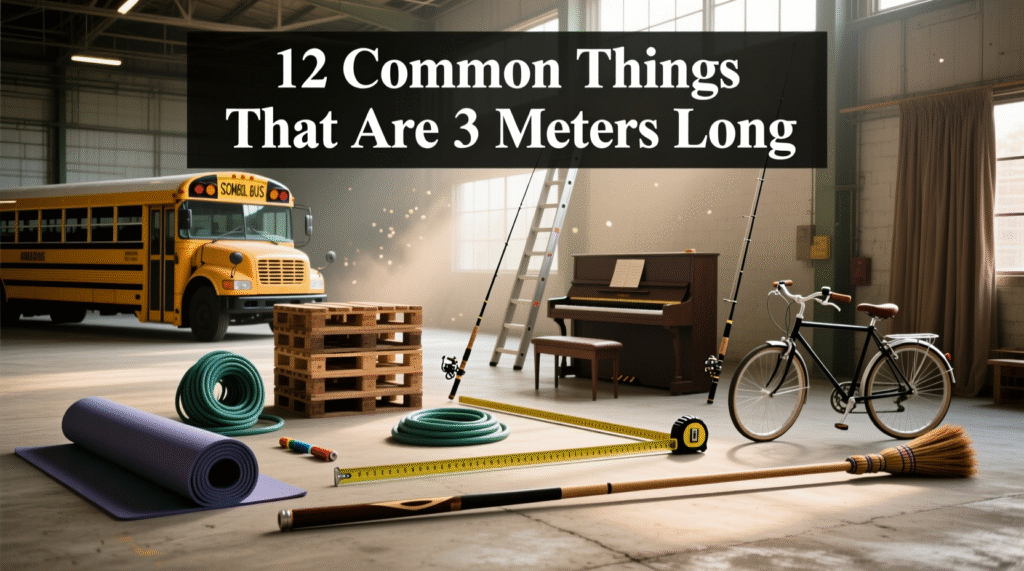Picture this: you’re standing in your backyard, trying to estimate whether that new garden fence will fit properly, or you’re at the furniture store wondering if that sleek sofa will work in your living room. Understanding measurements like 3 meters can save you from costly mistakes and awkward furniture arrangements. This seemingly simple length appears everywhere in our daily lives, from the sports we play to the vehicles we drive, yet many people struggle to visualize exactly how long 3 meters really is.
How Long is 3 Meters?
Three meters equals approximately 9.8 feet or 118 inches, making it roughly the length of a large SUV or the height of a single-story room including the ceiling. To put this in perspective, if you’re of average height (around 5’7″), you’d need to lie down end-to-end with another person of similar height to approximate 3 meters. This measurement bridges the gap between everyday objects and larger architectural elements, making it incredibly useful for home improvement projects, sports equipment sizing, and spatial planning.
The beauty of 3 meters lies in its practicality it’s long enough to be significant for room dimensions and vehicle lengths, yet short enough to visualize and work with in most residential settings. Whether you’re an athlete, homeowner, or simply someone who appreciates understanding the world around them, recognizing 3-meter objects can enhance your spatial awareness and decision-making abilities.
1. A Standard Ping Pong Table
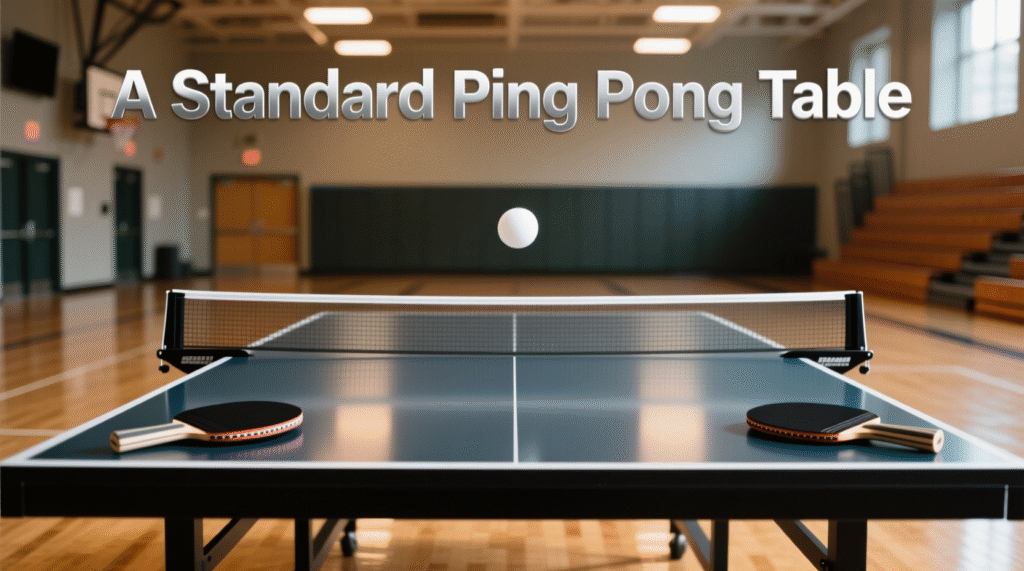
The regulation ping pong table stretches exactly 2.74 meters in length, making it just shy of our 3-meter mark but close enough to serve as an excellent reference point. Professional tournaments worldwide use tables conforming to International Table Tennis Federation standards, ensuring consistency across the sport.
This length allows for the perfect balance of gameplay long enough to require skill and strategy, yet compact enough to fit in most recreational spaces. The table’s dimensions have remained unchanged since the sport’s formalization in the 1920s, proving that sometimes perfection doesn’t need modification.
Here’s a fascinating tidbit: the original ping pong tables in Victorian England were actually dining tables with books stacked as nets. The sport evolved from an after-dinner parlor game called “whiff-whaff” into the lightning-fast Olympic sport we know today, but that crucial length dimension has remained remarkably consistent throughout its evolution.
2. A Compact Car

Most compact cars, including popular models like the Honda Civic, Toyota Corolla, and Volkswagen Golf, measure between 4.2 to 4.6 meters in total length. However, if you remove the front and rear overhangs (the portions extending beyond the wheelbase), the actual passenger compartment and cargo area span approximately 3 meters.
This 3-meter interior space represents automotive engineers’ careful balance between fuel efficiency, maneuverability, and passenger comfort. It’s precisely calculated to accommodate four adults comfortably while maintaining the vehicle’s ability to navigate tight parking spaces and narrow European streets.
The automotive industry’s focus on this dimension stems from urban planning requirements many city parking spaces are designed around these measurements. Interestingly, the 3-meter rule also appears in car carrier trucks, where vehicles are strategically arranged to maximize transport efficiency while maintaining safe loading protocols.
3. A Regulation Volleyball Net Setup

The total width of a volleyball court spans 9 meters, but each side of the net measures exactly 3 meters from the center line to the sideline. This measurement isn’t coincidental it’s precisely calculated to allow for optimal team positioning and strategic play.
Each team’s 3-meter zone creates what players call the “attack line,” a critical boundary that determines where back-row players can legally spike the ball. This dimension influences every aspect of volleyball strategy, from serve receive formations to defensive positioning.
Beach volleyball enthusiasts will recognize this measurement differently the entire beach volleyball court is smaller, but the 3-meter depth still plays a crucial role in player positioning. The sport’s inventors in 1895 chose these dimensions to create a game that required both power and precision, and modern Olympic volleyball still uses virtually identical measurements.
4. A Standard Canoe

Traditional recreational canoes typically measure between 3 to 3.5 meters in length, with 3 meters being the sweet spot for solo paddlers or intimate two-person expeditions. This length provides excellent maneuverability on rivers and lakes while offering sufficient storage space for day trips.
The 3-meter length represents generations of indigenous knowledge refined through practical use. Native American canoe builders discovered that this dimension offered the perfect balance between tracking ability (traveling in a straight line) and turning responsiveness, crucial for navigating both calm lakes and flowing rivers.
Modern canoe manufacturers still honor these traditional proportions because they work so well. A 3-meter canoe can typically carry 200-300 kilograms of passengers and gear while remaining light enough for a single person to portage (carry overland between water bodies). Adventure enthusiasts particularly appreciate this length because it fits on most standard car roof racks without requiring special permits or equipment.
5. A Queen-Size Bed (Including Frame)
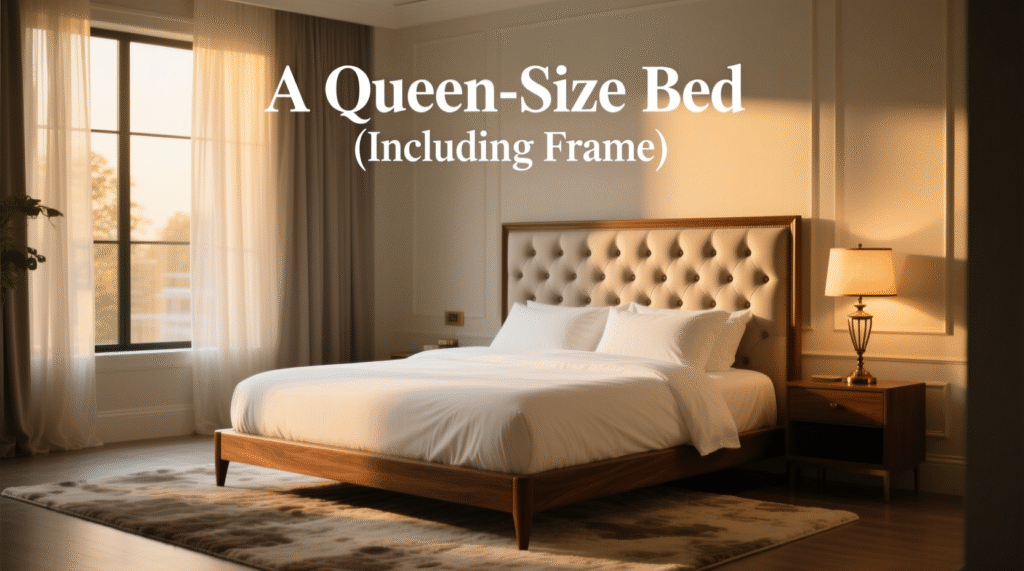
While a queen mattress itself measures 2 meters in length, adding a substantial headboard and footboard brings the total furniture piece to approximately 3 meters. High-end bedroom sets often feature elaborate headboards that extend the bed’s overall footprint significantly.
This extended length serves both aesthetic and practical purposes. The extra space accommodates built-in storage, electrical outlets, reading lights, and decorative elements that transform the bed from simple sleeping furniture into a complete bedroom centerpiece.
Interior designers consider the 3-meter total length when planning bedroom layouts, ensuring adequate walkway space and proper proportion with other furniture pieces. Luxury hotels often use beds with these dimensions to create an impression of opulence and comfort, knowing that guests associate larger furniture with higher quality accommodations.
6. A Standard Kayak

Recreational kayaks commonly measure 2.7 to 3.2 meters in length, with 3 meters representing the most popular size for casual paddlers. This length offers stability and forgiveness for beginners while providing enough performance potential to keep intermediate paddlers engaged.
The 3-meter measurement reflects decades of hydrodynamic research and user feedback. Shorter kayaks turn more easily but sacrifice speed and tracking ability, while longer kayaks move faster through water but become harder to maneuver in tight spaces. The 3-meter length hits the sweet spot for versatility.
Kayak rental companies worldwide stock predominantly 3-meter models because they accommodate the widest range of paddlers and conditions. These kayaks work equally well on calm lakes, gentle rivers, and protected coastal waters, making them the Swiss Army knife of the paddling world.
7. A Garden Greenhouse (Small)

Compact home greenhouses frequently measure 3 meters in length, providing sufficient space for serious hobbyist gardening without overwhelming smaller properties. This size accommodates approximately 15-20 potted plants or several rows of growing beds.
The 3-meter length aligns perfectly with standard lumber dimensions and greenhouse panel sizes, making these structures cost-effective to manufacture and easy for homeowners to assemble. Most residential building codes consider 3-meter greenhouses “accessory structures” that don’t require special permits.
Experienced gardeners appreciate this size because it creates distinct microclimates within the structure one end can be slightly warmer and more humid for tropical plants, while the other end remains cooler for vegetables and herbs. This natural temperature gradient occurs in 3-meter greenhouses due to their length-to-width ratio and typical ventilation placement.
8. A Standard Fishing Boat

Small fishing boats, particularly popular models designed for lakes and coastal fishing, commonly measure around 3 meters in length. These boats strike an ideal balance between portability and functionality, accommodating 2-3 anglers comfortably while remaining trailerable behind most vehicles.
This length provides sufficient stability for safe fishing while maintaining the shallow draft necessary for accessing productive fishing spots near shorelines and in shallow bays. The 3-meter dimension also meets most boating regulations for boats that can be operated without special licenses in many jurisdictions.
Charter fishing operations often use 3-meter boats for introductory fishing experiences because they feel less intimidating to novice anglers while still providing authentic fishing opportunities. These boats have become synonymous with accessible recreational fishing, making the sport welcoming to families and beginners.
9. A Standard Couch or Sectional Piece
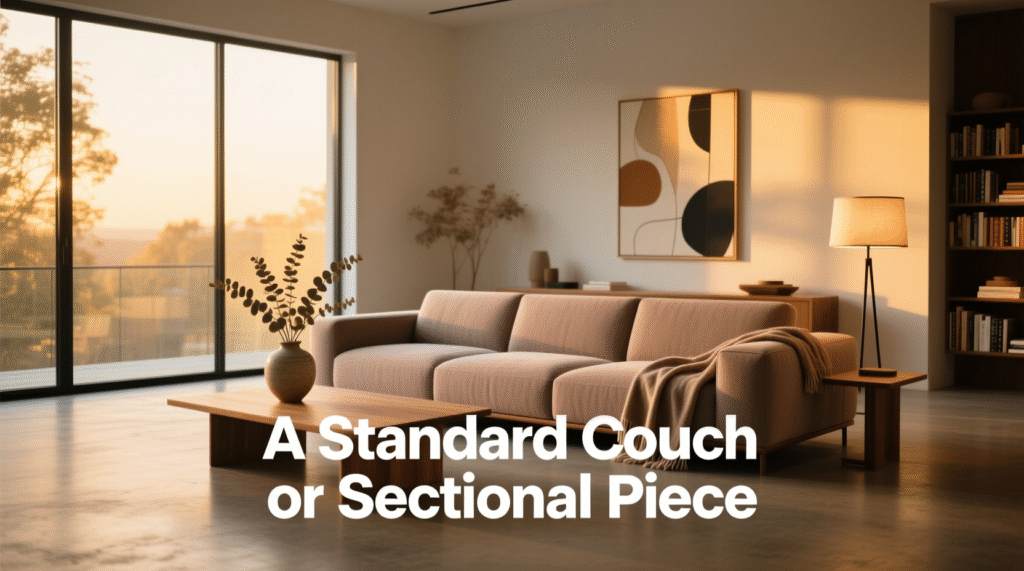
Large three-seater sofas typically measure between 2.7 to 3.2 meters in length, with 3 meters being particularly common for models designed to seat three adults comfortably. This length has become a furniture industry standard because it fits well in most living rooms while providing ample seating.
Furniture manufacturers recognize that 3-meter sofas represent the maximum size that can navigate standard doorways, staircases, and hallways during delivery. This practical consideration has shaped design standards across the industry, influencing everything from cushion proportions to leg placement.
Interior designers often use 3-meter sofas as anchor pieces in living room layouts because their substantial presence helps define conversation areas and traffic flow. The length provides enough visual weight to balance other large furniture pieces like entertainment centers and bookcases without overwhelming smaller rooms.
10. A Standard Pool Table
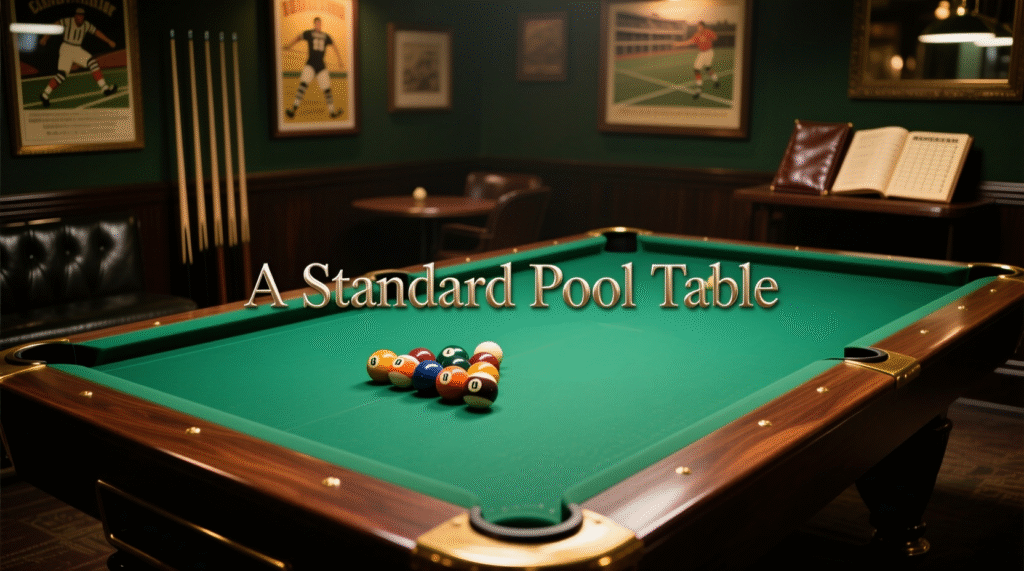
While regulation pool tables vary in size, the most common home versions measure approximately 3 meters in length (including the rail system). These 7-foot tables provide authentic gameplay experience while fitting into most recreational spaces.
This length allows for proper cue stick movement around the entire table perimeter a crucial consideration since standard pool cues measure 1.4 meters in length. Professional installers always verify that rooms have adequate clearance around 3-meter tables to ensure unrestricted play.
Pool halls and recreational centers favor 3-meter tables because they accommodate both casual players and serious competitors. The dimension provides enough challenge to develop skilled shot-making while remaining forgiving enough for social play, making it the goldilocks size of the billiards world.
11. A Small Boat Trailer

Boat trailers designed for watercraft in the 3-meter range typically measure about 3 meters themselves, creating a matched system for safe transportation. These trailers incorporate sophisticated engineering to distribute weight properly and provide secure mounting points.
The trailer’s length includes space for the winch mechanism, bow stop, and proper weight distribution that keeps the towing vehicle stable at highway speeds. Trailer manufacturers have refined these dimensions through decades of real-world testing and accident analysis.
Boating enthusiasts appreciate that 3-meter trailers fit in most residential driveways and don’t require special parking arrangements or storage facilities. This accessibility has helped maintain boating as a popular recreational activity for middle-class families rather than exclusively wealthy boat owners.
12. A Standard Workbench

Professional-grade workbenches commonly measure 3 meters in length, providing ample space for woodworking, mechanical repairs, and various crafting projects. This length accommodates standard lumber dimensions while offering enough surface area for complex projects.
Craftspeople have gravitated toward 3-meter workbenches because they can handle full sheets of plywood (which measure 2.44 meters) with room to spare for tools and materials. The extra length provides flexibility for clamping, assembly, and finishing operations.
Workshop designers consider 3-meter workbenches optimal because they can be positioned along most garage walls while leaving sufficient workspace around them. This length also allows multiple people to work simultaneously without crowding, making it ideal for teaching workshops or collaborative projects.
Real-World Applications & Practical Measurement Tips
Understanding 3-meter lengths becomes invaluable in numerous daily situations. When furniture shopping, you can quickly assess whether that gorgeous dining table will fit in your space by visualizing it as roughly the length of a ping pong table. Home improvement projects become more manageable when you can estimate 3-meter distances using familiar reference points.
For quick measurements without a measuring tape, remember that most people can take approximately four normal steps to cover 3 meters. Alternatively, if you know your arm span (which typically equals your height), you can use this to estimate 3-meter distances fairly accurately.
Professional contractors often teach apprentices to recognize 3-meter distances instinctively because this skill speeds up initial project assessments and material estimates. The ability to visualize this length accurately can save time, reduce waste, and improve project planning across numerous trades.
Measuring Without a Ruler: Creative Solutions
When measuring tools aren’t available, several household items can help you estimate 3-meter distances. Most smartphones measure approximately 15 centimeters, meaning you’d need 20 phone-lengths to reach 3 meters. Dollar bills (or similar currency) typically measure about 15.5 centimeters, providing another convenient measuring reference.
For larger spaces, count your normal walking steps most adults cover roughly 75 centimeters per step, making 3 meters equal to about four steps. This technique proves particularly useful when evaluating room dimensions or outdoor spaces.
Conclusion
Recognizing 3-meter objects enhances your spatial intelligence and practical decision-making abilities in countless situations. Whether you’re planning a home renovation, choosing sports equipment, or simply trying to win a friendly argument about distances, this knowledge serves you well.
The next time you encounter any of these common 3-meter objects, take a moment to really observe and remember their scale. This mental cataloging will serve as your personal measurement reference library, making you more confident and capable in spatial reasoning tasks.
Here’s your challenge: walk through your home, office, or neighborhood and identify how many 3-meter objects you can spot. You might be surprised to discover just how frequently this measurement appears in the designed world around you. From the couch you’re sitting on to the car parked outside, 3-meter dimensions shape our daily experiences in ways we rarely stop to consider but now you’ll never see them the same way again.

James Harrington is a writer known for his compelling storytelling and diverse themes. His work blends creativity with thought-provoking ideas, captivating readers across genres. Through his website, DimensionsGo.com, he shares his latest projects, insights, and literary reflections, building a global community of readers and writers.

